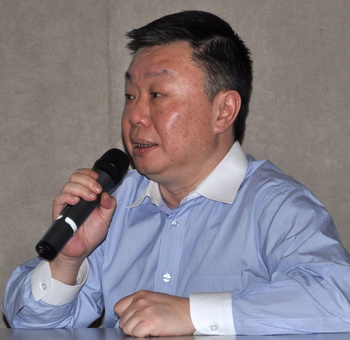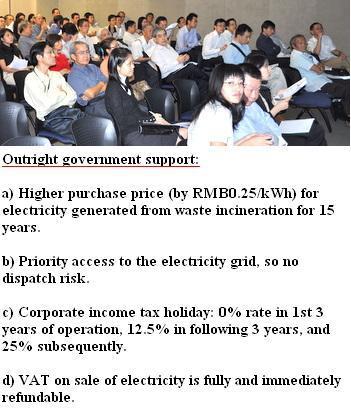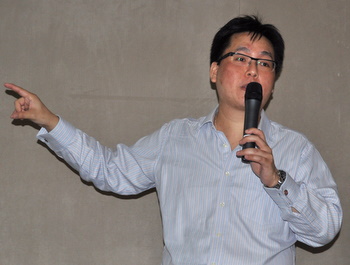
WASTE-TO-ENERGY plants will become more common in China, as rapid economic development results in increasing volumes of rubbish being generated.
China currently incinerates only 10% of its waste but with rapid urbanization, municipal solid waste is expected to grow at 8% a year.
C&G’s executive director, Mr Lin Yan, met investors yesterday at CIMB to explain why the company is one of China’s leading waste-to-energy player.
This is reflected by its winning national ‘technology demonstration’ awards in June for its waste-to-energy projects at Hui’an and Hangshi.
The awards recognised its waste incineration technology, which improves electricity production by up to 17% with a minimal increase in investment and maintenance costs.
C&G currently has a total of 10 waste-to-energy projects across four provinces in China -- Fujian, Hubei, Liaoning and Hebei -- with an aggregate municipal solid waste treatment capacity of 10,050 tons per day.

Below is a summary of the questions raised by investors at CIMB and the management’s replies.
Q: What exactly is municipal solid waste?
Municipal solid waste refers to all kinds of waste generated in urban areas, ranging from biodegradable waste such as food and kitchen waste to recyclable material such as waste paper from offices and disposable plastic containers.
Q: How do you segregate the waste?
The 2 main technologies are stokers and circulating fluidized bed (“CFB”). Using CFB technology, waste is manually sorted and crushed into tiny pieces and blown into a furnace for combustion. This is similar to the coal-fired power plants. We use stokers, which does away with manual sorting.
Q: Can you make money from the residue of burnt waste?
Residual waste from combustion is known as slag. Slag can be sold to environmentally friendly brick manufacturers, but there are not many of them currently. So we simply dispose of our slag.

Q: How do you deal with sludge?
In our waste-to-energy plants, heat generated during combustion can be used to burn sludge. We are co-operating with tertiary institutions to explore technology for sludge treatment.
Q: What are your plans on overseas expansion?
We want to expand to Vietnam, Thailand and Turkey. We’ve been laying groundwork in Thailand for 4 years, and hope to clinch our first project there in a year. We also hope to clinch one project in Vietnam and one in Turkey by the end of 2011.
Q: Can you explain your tax incentives?
Each new project is wholly exempted from tax during its first three years of operation. During the fourth to sixth year of operation, the tax rate is only 12.5%, i.e. a 50% exemption.
Q: Are you planning a dual listing?
We have no plans as yet. We will consider this only in 2012, when all our plants are in operation.
Related story: C&G: Lively debate over dividend payout at AGM






